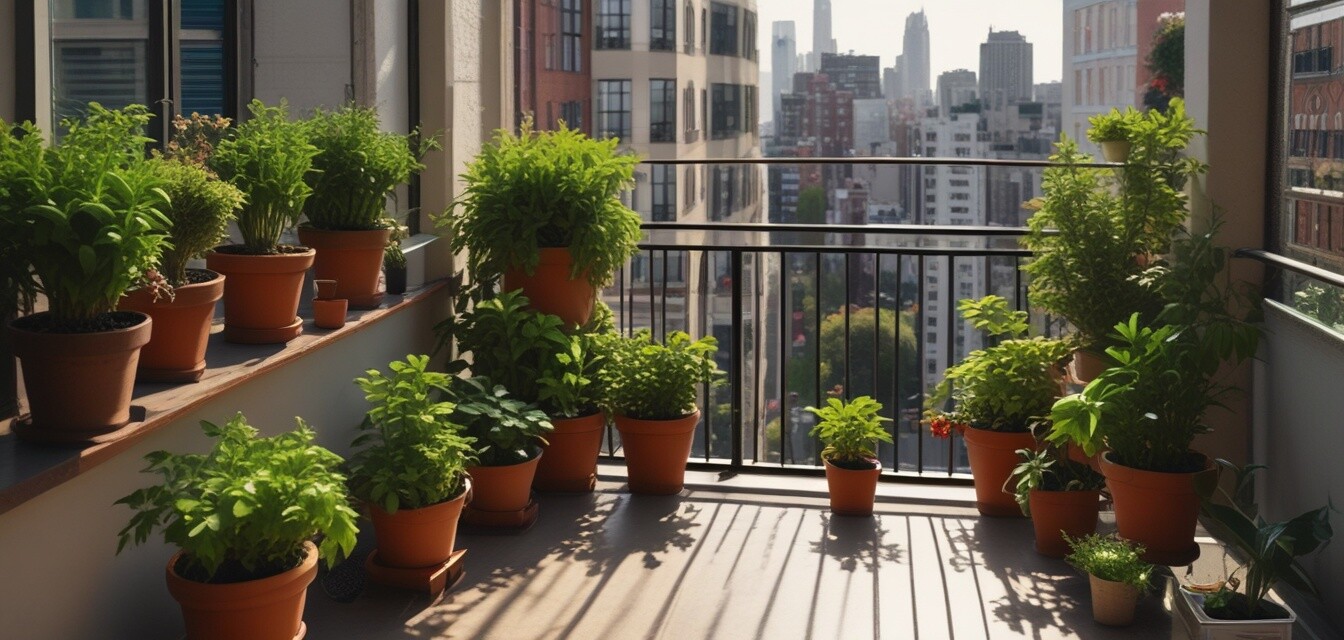
DIY Plant Propagation Techniques
Key Takeaways
- Plant propagation allows you to expand your garden without spending much money.
- There are various methods for propagating plants, including water propagation and soil propagation.
- Common plants suitable for propagation include pothos, succulents, and herbs.
- Understanding the right conditions for light and moisture is essential for successful propagation.
- Experimenting with propagation can lead to a thriving urban garden oasis.
If you're a balcony gardener looking to expand your collection without breaking the bank, mastering DIY plant propagation techniques is the way to go. With these easy methods, you can turn a single plant into multiple new ones, creating a lush oasis right at home. In this article, we’ll delve into various propagation techniques that are not only simple but also incredibly rewarding.
What is Plant Propagation?
Plant propagation is the process of taking a part of a plant and encouraging it to grow into a new, independent plant. This versatile method promotes sustainability and allows you to create more greenery, enhancing your outdoor living space.
Popular DIY Propagation Techniques
Here are some of the most common DIY plant propagation techniques that are perfect for balcony gardeners:
| Technique | Description | Best Plants |
|---|---|---|
| Water Propagation | Using water to root cuttings before transferring them to soil. | Pothos, Spider Plant, Philodendron |
| Soil Propagation | Planting cuttings directly in soil to encourage root growth. | Succulents, Herbs, Coleus |
| Leaf Propagation | Using leaves from certain plants to grow new roots and stems. | |
| Division | Separating a larger plant into smaller sections, ensuring each has roots. | Hostas, Daylilies, Ornamental Grasses |
1. Water Propagation
Water propagation is a straightforward method where you take cuttings from the parent plant and place them in a container filled with water. Here’s how to do it:
- Choose a healthy stem with several leaves.
- Cut below a node and place it in a glass of water, ensuring the node is submerged.
- Change the water every few days to keep it fresh.
- Once roots develop (usually within a few weeks), you can transplant them into soil.
2. Soil Propagation
Soil propagation involves planting the cuttings directly into the soil. Follow these steps:
- Select healthy stems and cut below a node.
- Dip the cut end in rooting hormone (optional).
- Insert the cutting into a small pot filled with moist potting soil.
- Water lightly and cover with a plastic bag to maintain humidity.
3. Leaf Propagation
Leaf propagation works wonders for certain plants, especially succulents. Here’s the process:
- Gently twist a leaf from the parent plant.
- Let the leaf callous over for a few days.
- Place the leaf on top of well-draining soil, mist lightly.
- Roots will develop, followed by new plantlets.
4. Division
This technique is ideal for plants that grow in clumps. Here's how to do it:
- Remove the plant from its pot and shake off excess soil.
- Carefully separate the plant into sections, ensuring each section has roots.
- Replant each division in separate pots.
Best Plants for Propagation
Some plants are particularly easy to propagate, making them perfect for balcony gardeners. Here’s a list of recommended plants:
- Pothos
- Spider Plant
- Succulents
- Mint
- Basil
Tips for Successful Plant Propagation
For beginners
- Use clean tools when cutting to avoid diseases.
- Choose a container with drainage holes for soil propagation.
- Ensure your cuttings receive indirect sunlight, which encourages growth.
- Keep the soil moist but not soggy during the rooting process.
- Be patient and give your cuttings time to establish roots.
Conclusion
Propagating plants is a fulfilling and cost-effective way to expand your balcony garden. By employing these DIY plant propagation techniques, you can create a beautiful collection of plants that enhance your urban oasis. Discover the joys of gardening by experimenting with different methods and plants, and enjoy the satisfaction of watching new plants grow and thrive.
Pros
- Cost-effective way to increase your plant collection.
- Fun and rewarding activity.
- Encourages sustainable gardening practices.
Cons
- Some techniques may require patience and time.
- Not all plants propagate easily.
Interested in more gardening tips? Check out our [Gardening Tips blog](/blog/gardening-tips) for practical advice and inspiration for your small balcony space. Learn how to choose the right plants with our [Buying Guides](/blog/buying-guides) and explore various ways to create a flourishing garden with our [Vertical Gardening](/blog/vertical-gardening) options.